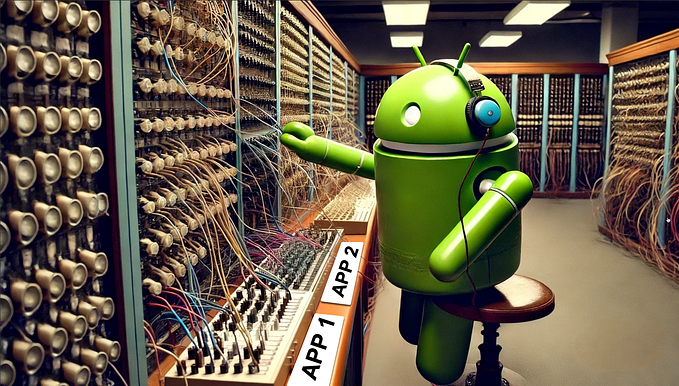Routines to Coroutines: How Kotlin Revolutionized Asynchronous Programming

The Basics: Main Routine and Subroutines
In traditional programming, execution flow is structured around a main routine (the entry point of the program) and subroutines (helper functions that perform specific tasks).
What is a Main Routine?
The main routine (often called main()) is:
- The entry point of every program.
- The first function that executes when you run your code.
- Responsible for orchestrating the program’s workflow.
- In Kotlin/Java/C-style languages, it looks like this:
fun main() {
// Program starts executing here
first()
second()
}Key characteristics:
- Mandatory — Every executable program must have one
- Parent function — Calls other subroutines
- Lifecycle controller — Determines the order of operations
What are Subroutines?
Subroutines (also called functions/methods) are:
- Reusable blocks of code that perform specific tasks
- Called by the main routine or other subroutines
- Modularize code into logical units
fun first() {
// Does task A
}
fun second() {
// Does task B
}Key characteristics:
- Single Responsibility — Each should do one thing well
- Callable — Can be invoked multiple times
- Stack-based — Follows Last-In-First-Out (LIFO) execution
fun main() {
first() //subroutine
second() //subroutine
}
fun first() {
var first = 1
while (true) {
println("first: ${first++}")
}
}
fun second() {
var second = 1
while (true) {
println("second: ${second++}")
}
}What actually happens:
- Program launches →
main()starts executing main()callsfirst()→ execution jumps tofirst()first()enters infinite loop → never returnssecond()never gets called because control never returns tomain()
The Critical Limitation
This demonstrates a fundamental programming constraint:
- Subroutines are blocking — The caller waits until completion
- No concurrency — Only one function executes at any moment
- Order-dependent — Strict sequential execution
Visualizing the Call Stack
Call Stack State
----------- --------
Program starts
main() Calls first()
first() Enters loop
[stack frozen] first() never returnsThis blocking behavior is exactly what coroutines solve by introducing:
- Suspendable functions
- Non-blocking operations
- Concurrent execution

In our previous example with traditional subroutines, we saw how first()'s infinite loop completely blocked execution of second(). Now let's examine how coroutines revolutionize this behavior:
fun main(): Unit = runBlocking {
launch { first() } // coroutine 1
launch { second() } // coroutine 2
}
suspend fun first() {
var first = 1
while (true) {
println("first: ${first++}")
delay(2000) // Suspension point
}
}
suspend fun second() {
var second = 1
while (true) {
println("second: ${second++}")
delay(1000) // Suspension point
}
}Key Differences from Subroutines
1. Non-Blocking Concurrent Execution
- Both functions now run concurrently instead of sequentially
- Output will interleave: “second” prints twice as often as “first”
- Neither function blocks the other
2. The Magic of Suspension Points
delay()is a suspension function that pauses execution without blocking- When encountered, the coroutine:
- Yields the thread
- Schedules resumption
- Allows other coroutines to run
3. Structured Concurrency
runBlockingcreates a coroutine scopelaunchstarts new coroutines as children of this scope- All coroutines are automatically cancelled when the scope completes
How This Works Internally
Coroutine Execution Timeline
Time (ms) | Coroutine 1 (first) | Coroutine 2 (second)
----------|--------------------------|----------------------
0 | Prints "first: 1" |
| Suspends for 2000ms | Prints "second: 1"
| | Suspends for 1000ms
1000 | | Resumes, prints "second: 2"
| | Suspends for 1000ms
2000 | Resumes, prints "first: 2"|
| Suspends for 2000ms | Prints "second: 3"
3000 | | Resumes, prints "second: 4"
... | ... | ...Why This Matters
- Resource Efficiency
- Traditional threads: ~1MB stack per thread
- Coroutines: ~50 bytes per suspended coroutine
2. Simplified Concurrency
- No callback hell
- Sequential-looking code with asynchronous execution
3. Responsive Applications
- Never blocks the main thread
- Easy to implement features like:
- Parallel network requests
- Animations with delays
- Background processing
Visual Comparison
Subroutine Execution
main()
└── first() (runs forever)
└── second() (never reached)Coroutine Execution
runBlocking
├── launch { first() } (suspends/resumes)
└── launch { second() } (suspends/resumes)
Conclusion
This demonstrates the paradigm shift from linear, blocking execution to flexible, non-blocking concurrency. By leveraging suspension points and structured concurrency, coroutines enable efficient multitasking without sacrificing code clarity. This evolution from rigid subroutine execution to flexible coroutines represents a fundamental advancement in asynchronous programming.
Hope you liked this article. Happy Coding!!







